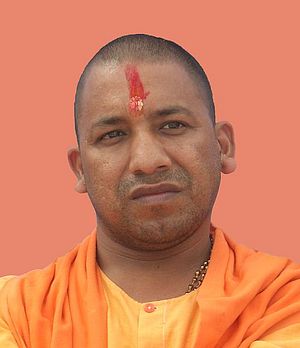On Saturday, India’s ruling Bharatiya Janata Party (BJP) tapped Yogi Adityanath to take over as the chief minister of Uttar Pradesh, India’s most populous state with more than 200 million people. The party’s decision comes a week after the BJP and Modi saw their most significant electoral victory since 2014, with a dominant sweep of state assemblies in Uttar Pradesh and Uttarakhand, and alliance government formation in Goa and Manipur.
Adityanath, who has consistently advocated the transformation of India into an overt Hindu nation and away from its post-colonial secularist roots, has a record of religiously charged controversial statements pitting Hindus against Muslims in India.
Since Prime Minister Narendra Modi’s election victory in 2014, political observers of India have debated the extent to which Modi and the BJP would prioritize a center-right economic agenda of liberalization over Hindu nationalism. While controversies over Hindu nationalist rhetoric from BJP parliamentarians and party functionaries have been a common occurrence, Modi’s record to date suggested that his overriding mandate continued to be focused on economic development issues domestically.
Adityanath’s ascendance from the Lok Sabha (the lower house of India’s parliament, which he entered at the age of 26) to the chief minister’s office in Uttar Pradesh, provides evidence that the BJP may be recalibrating its national strategy somewhat. Given India’s federal structure, state chief ministers bear immense power over the ability of any central government to enact an agenda of reform. With Adityanath at the helm in Uttar Pradesh — a state that on its own is a serious heavyweight in Indian politics — the BJP agenda may see further divergence from the “maximum governance, minimum government” mission Modi promised in 2014.
In a sense, however, Adityanath’s appointment, while surprising, isn’t difficult to rationalize from the BJP’s point of view. The BJP’s recent campaign in Uttar Pradesh paid handsome dividends, with the BJP ending up with 265 more seats than it had in the previous legislative assembly. Akhilesh Yadav’s Samajwadi Party and Mayawati’s Bahujan Samaj Party were unable to contend with the BJP’s energetic and often religiously charged campaign. On one level, propelling Adityanath to the chief minister’s office is a pragmatic move by the party to preserve the BJP’s fortunes in Uttar Pradesh through 2019 and beyond, when India will hold its next general elections.
In 2014, when Modi came to power, the BJP only exercised control of five state-level governments. While much of the commentary back then emphasized the BJP’s historic Lok Sabha mandate, which was unprecedented in nearly three decades of Indian politics, the lack of a strong state-level showing since then capped what was achievable in terms of economic reform — not least due to the BJP’s lack of control in the Rajya Sabha, the upper house of India’s parliament, but also because state chief ministers have a great deal of autonomy to pursue their own economic agenda.
For now, Adityanath is pitching himself as an envoy of the prime minister with his eyes set on the economic agenda. “I am confident that the state will march on the path of development,” he told the Press Trust of India. Despite this assurance in his first interactions with the press since the BJP’s Saturday announcement, observers have rightly focused on Adityanath’s troubling history in Indian politics, which mark him as a champion of Hindu nativist chauvinism.

































